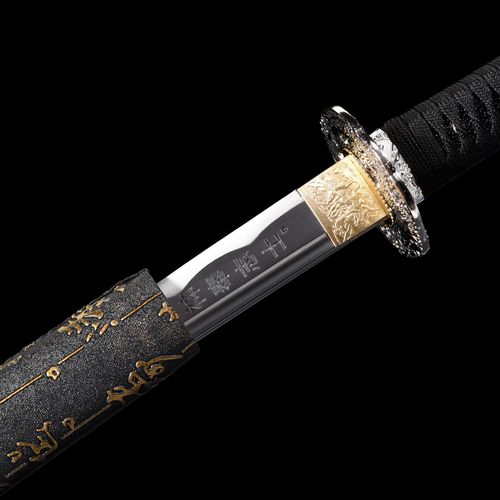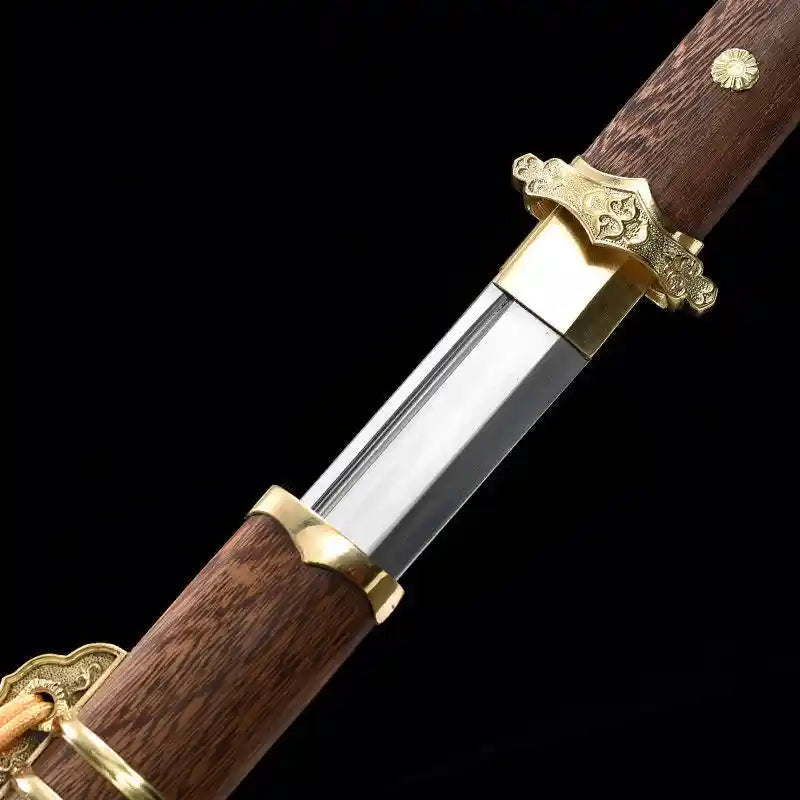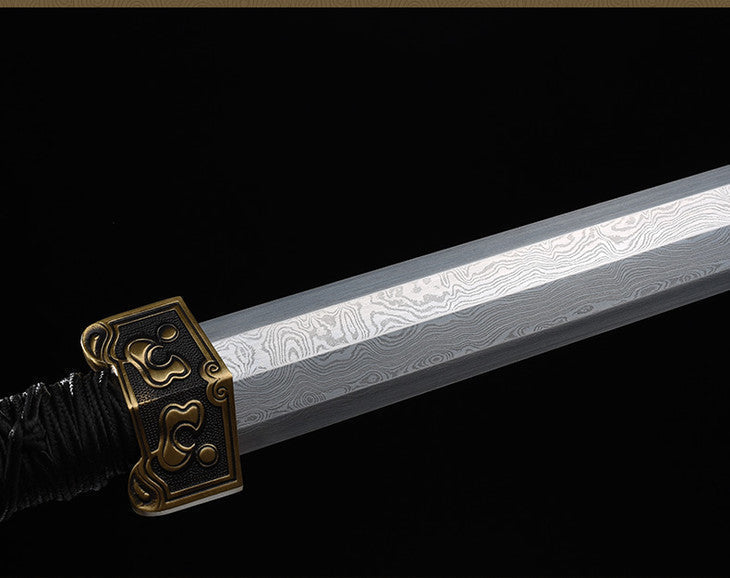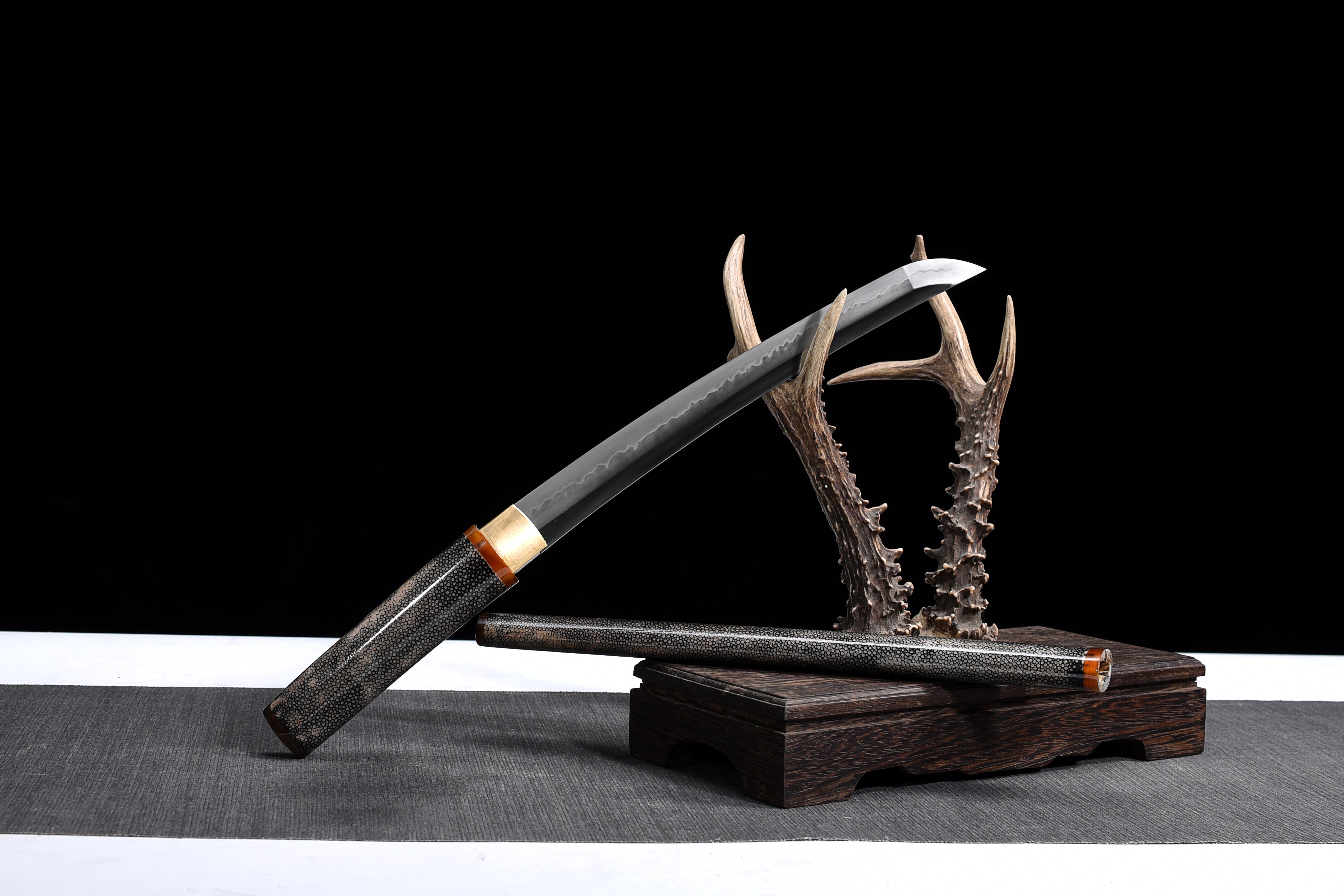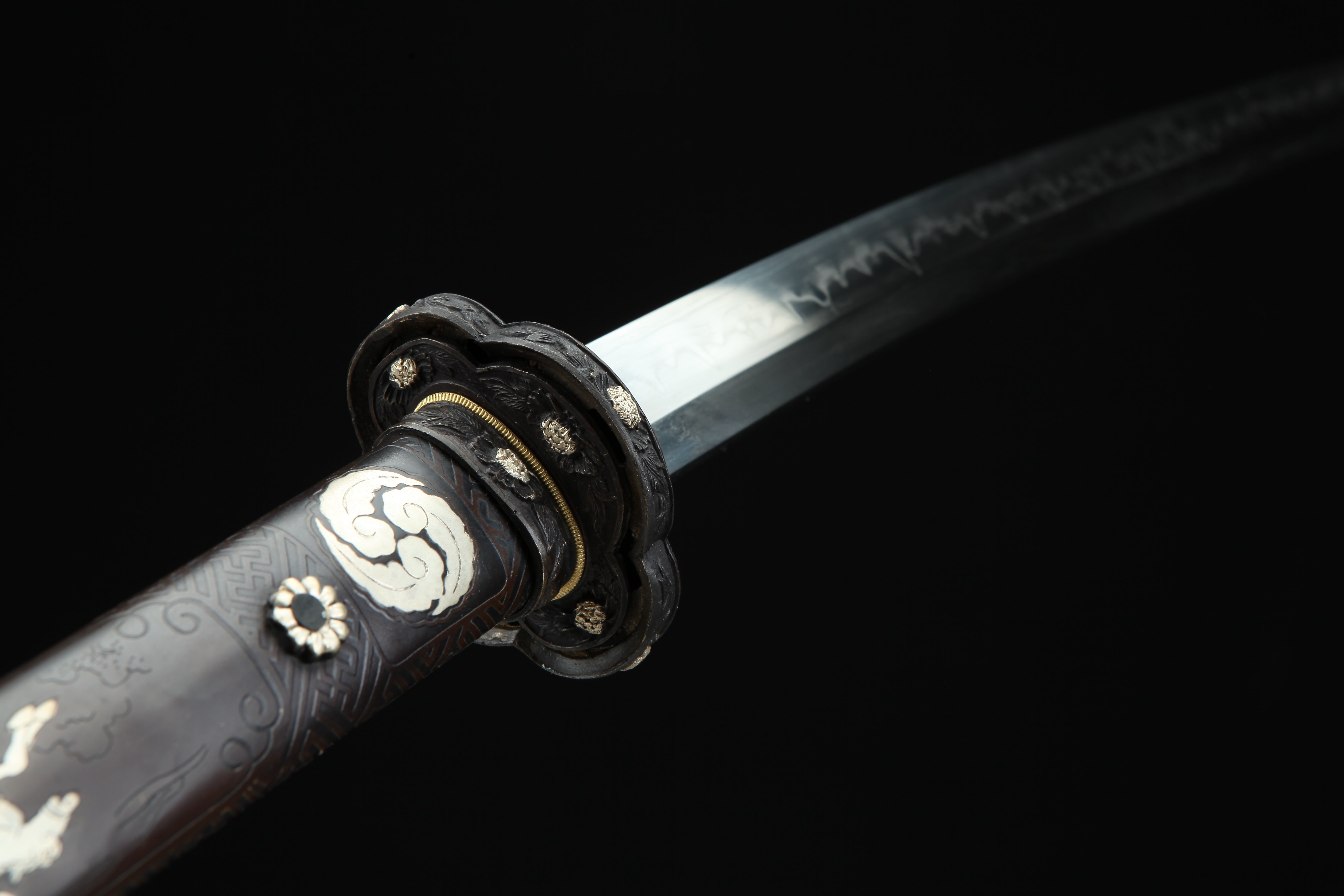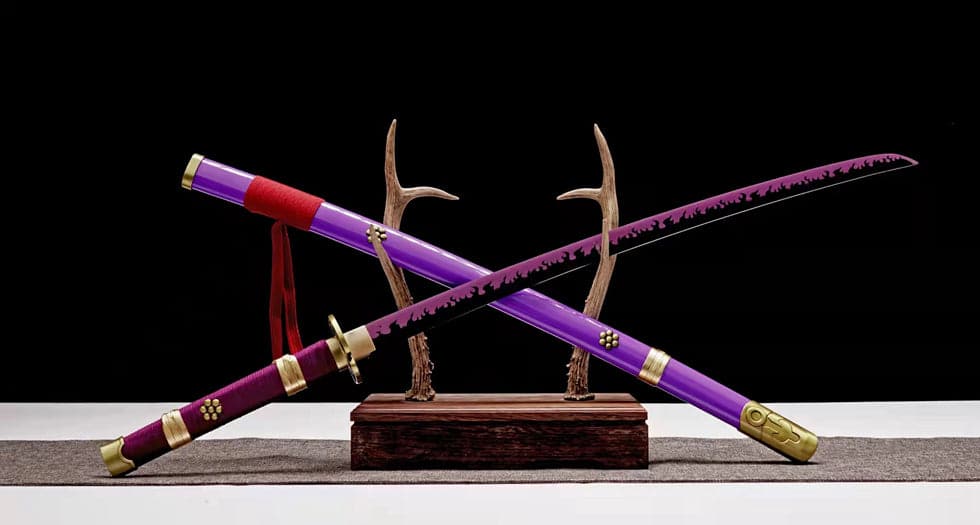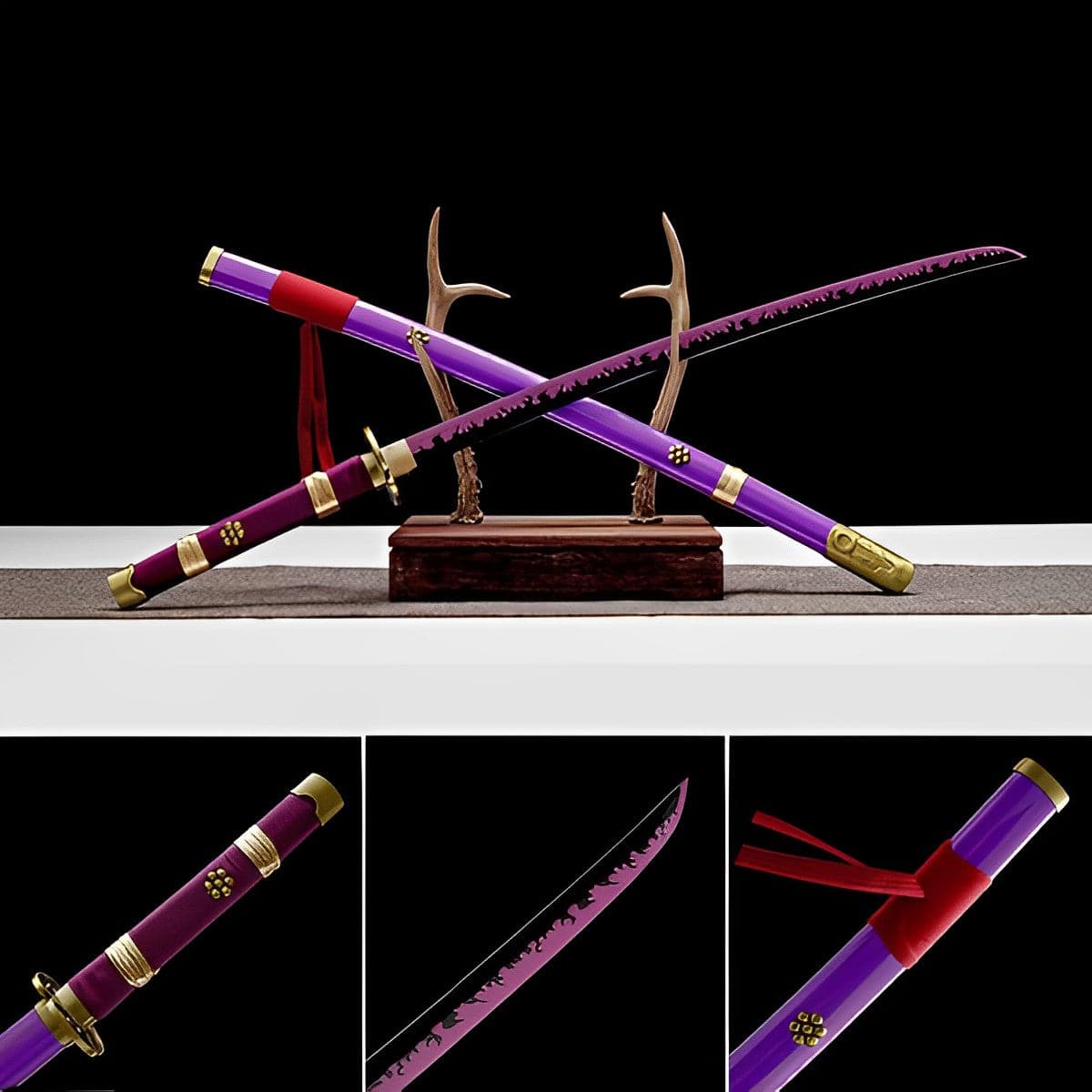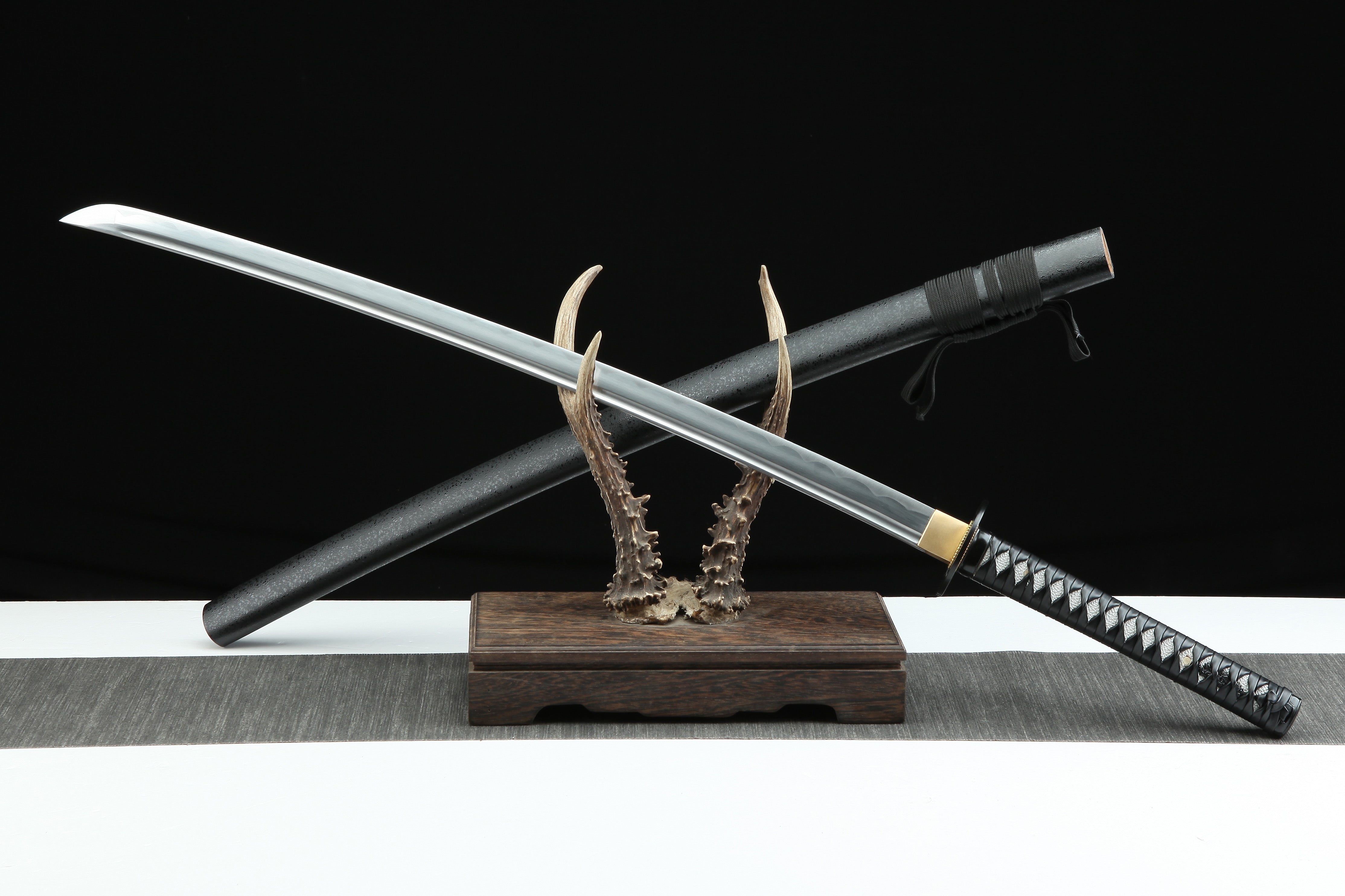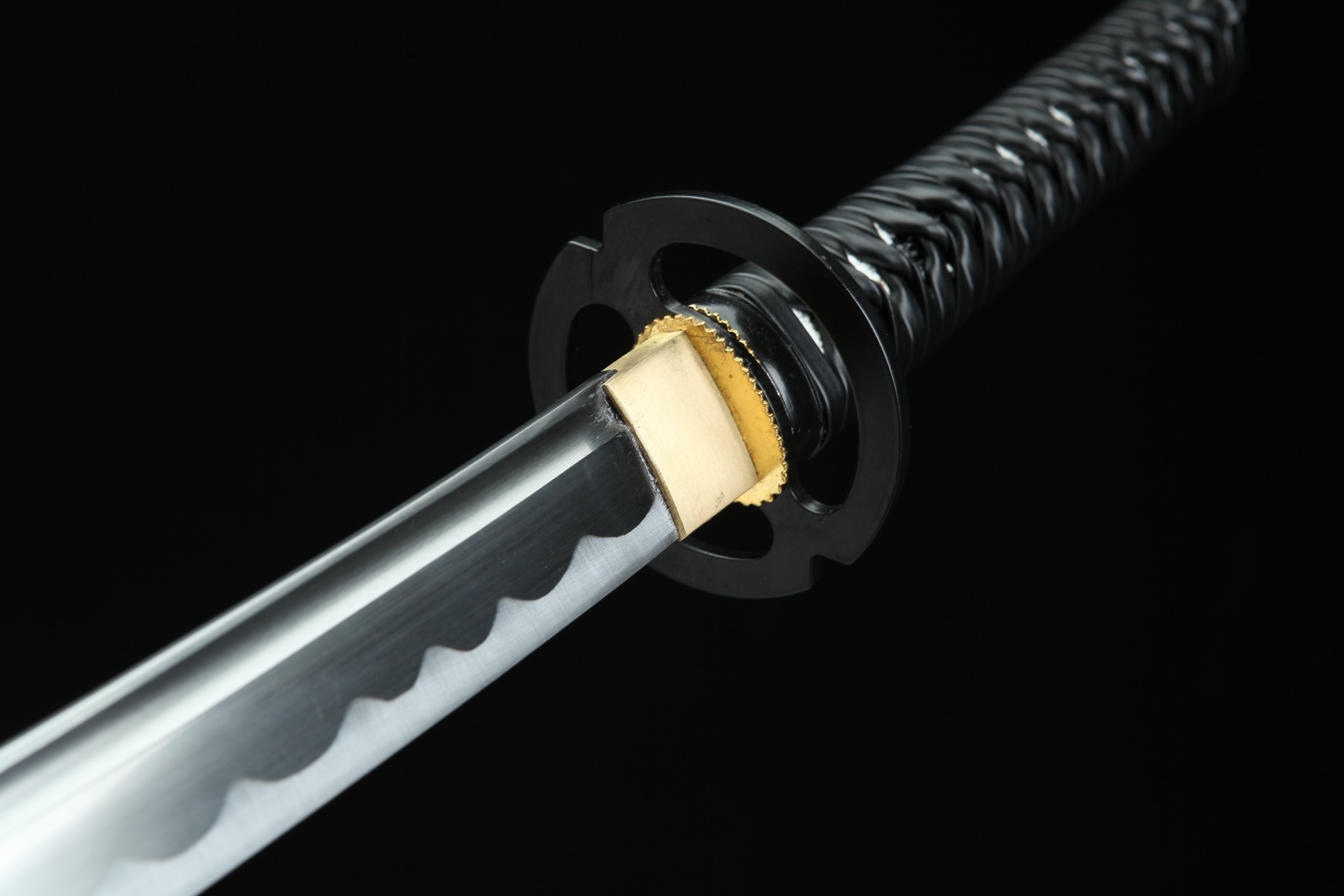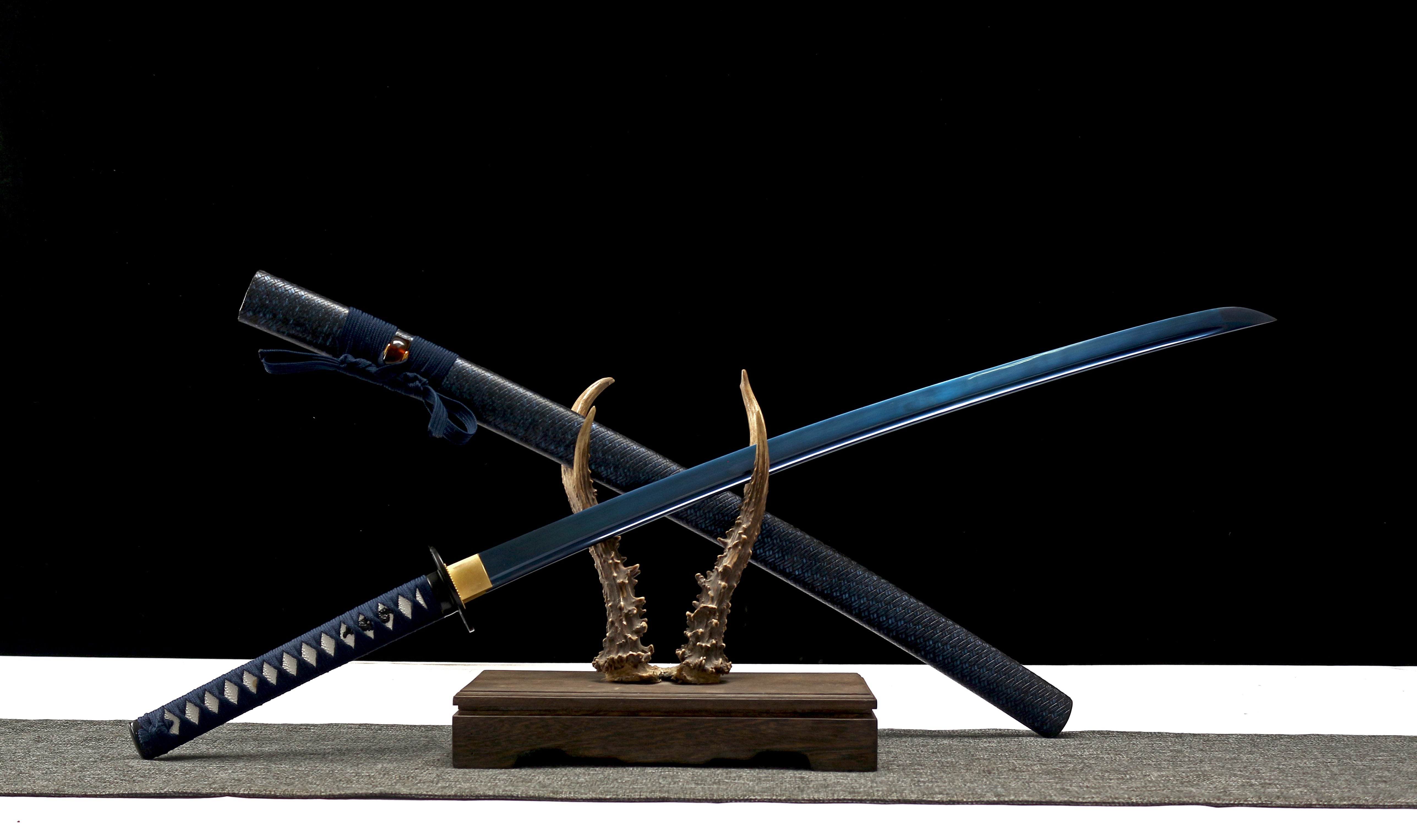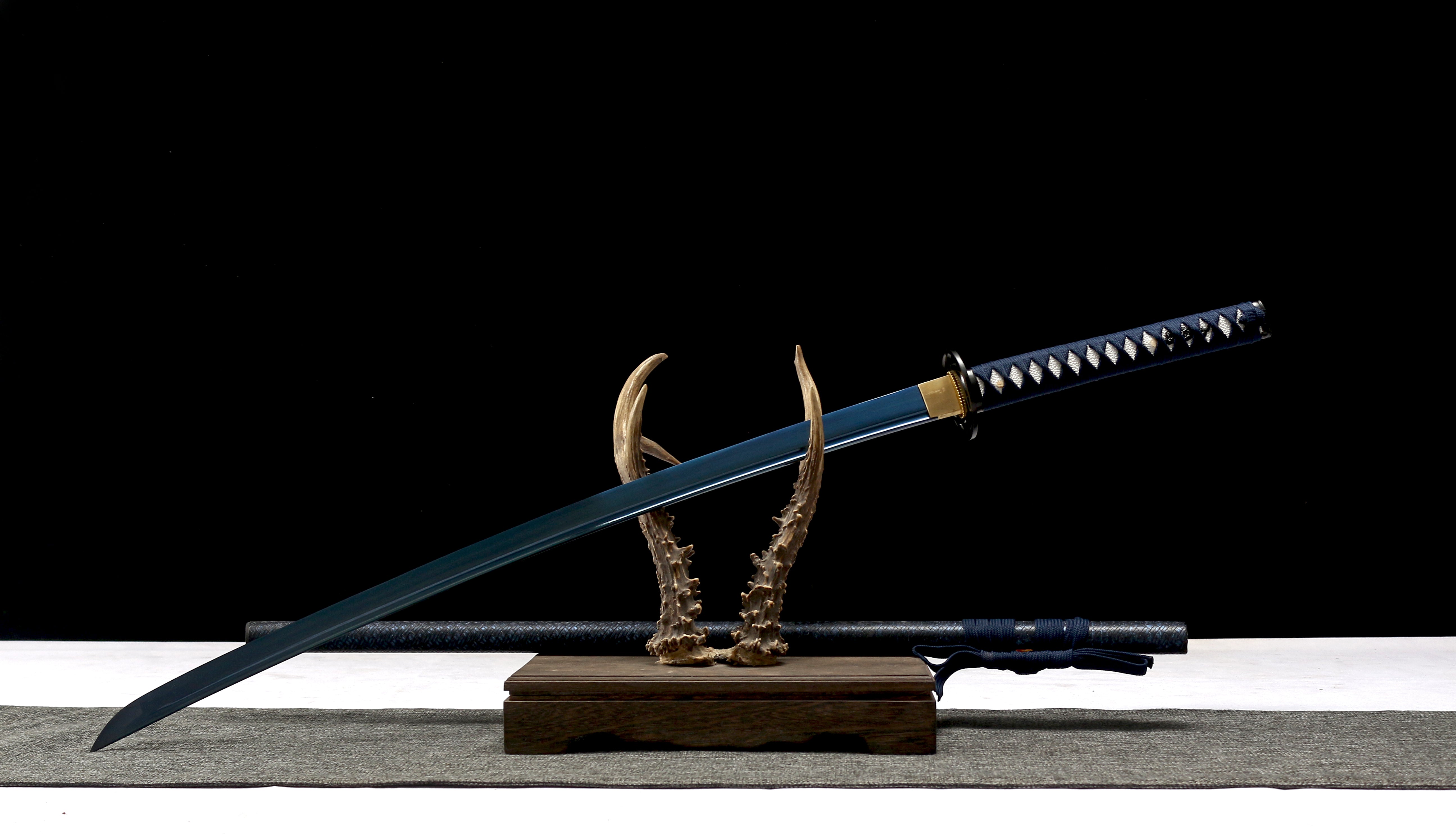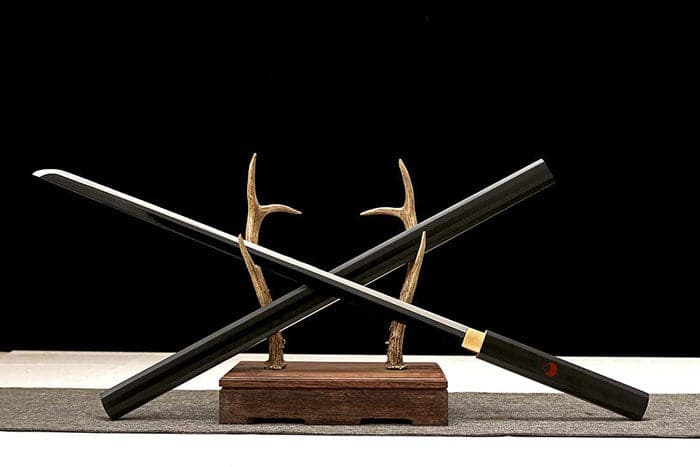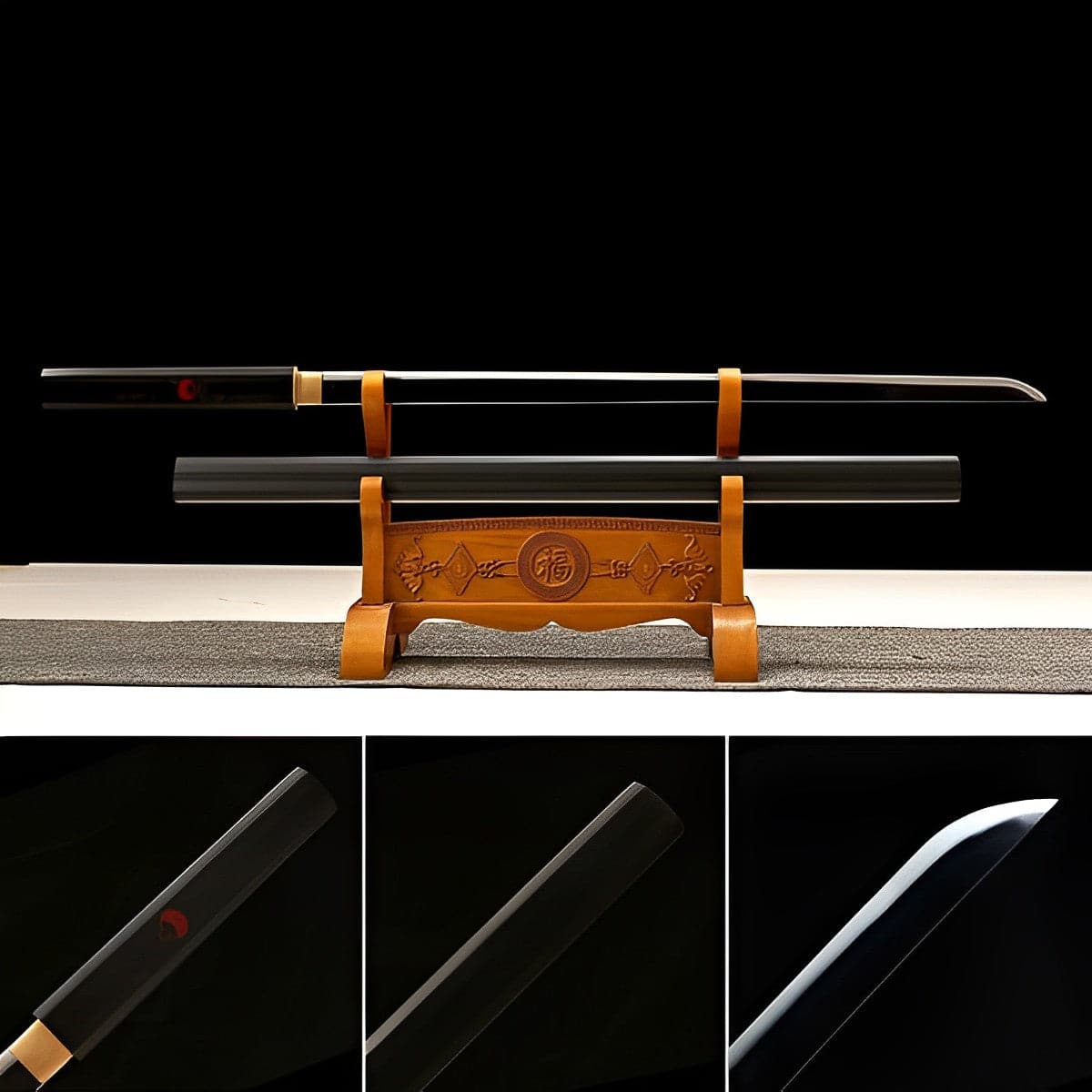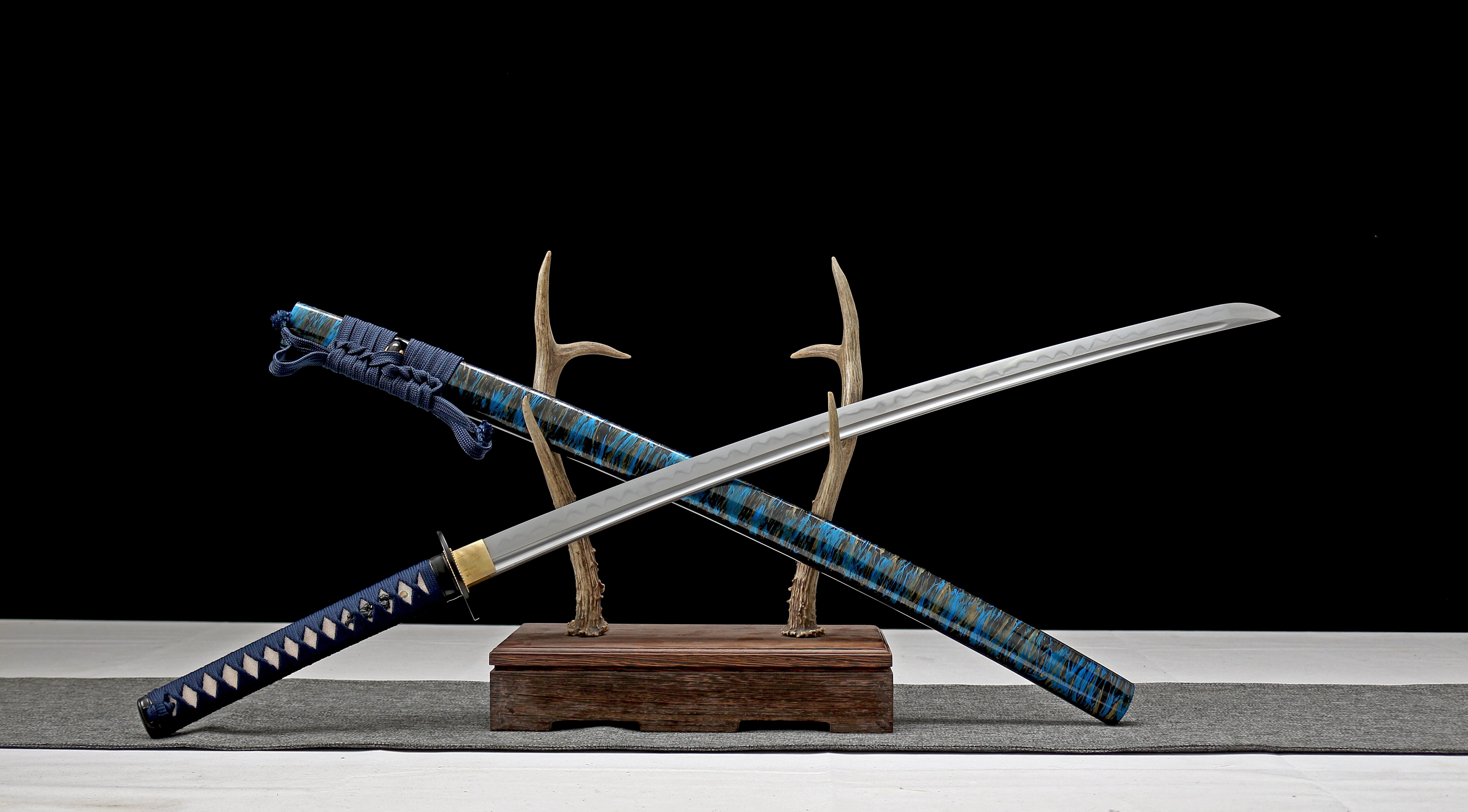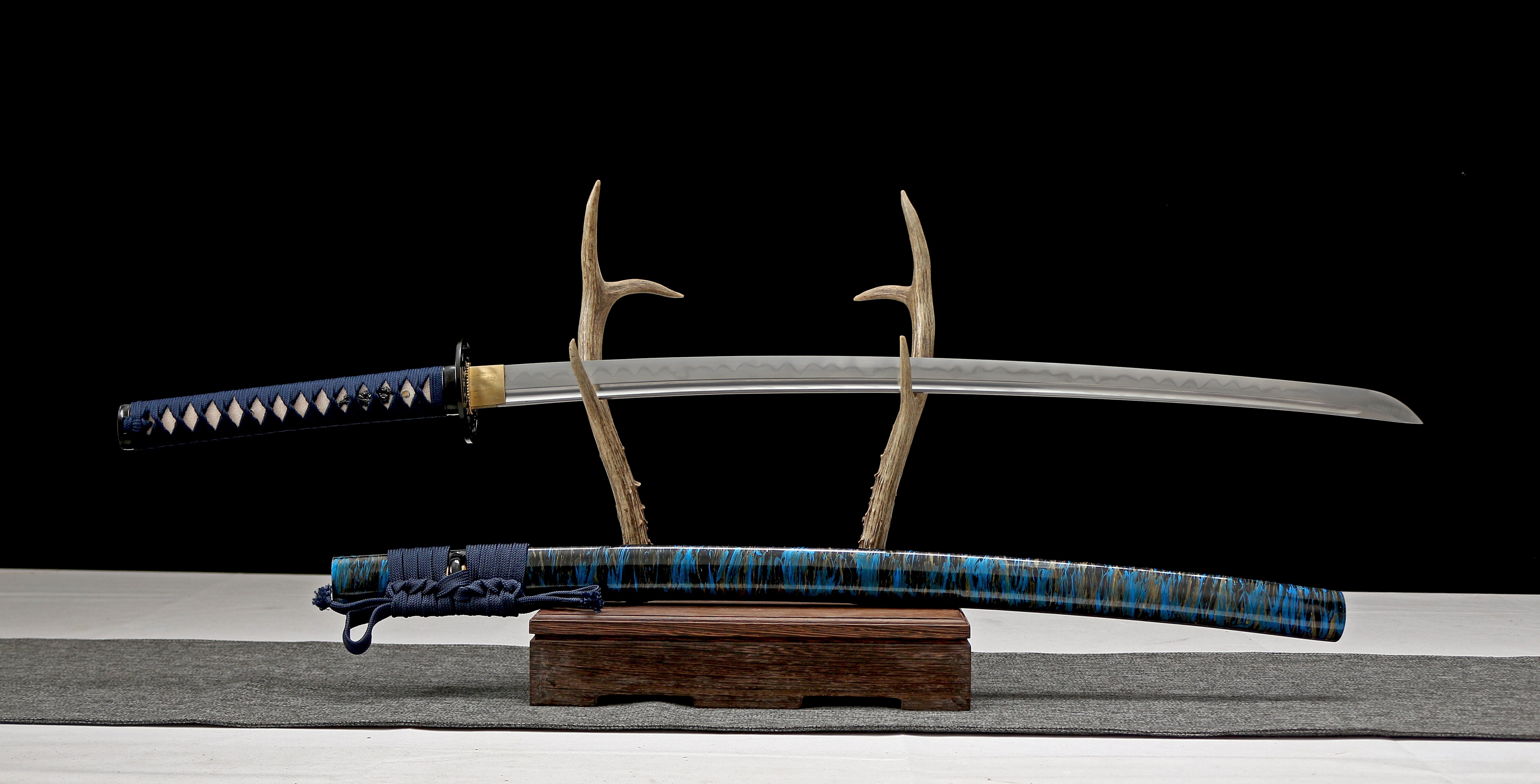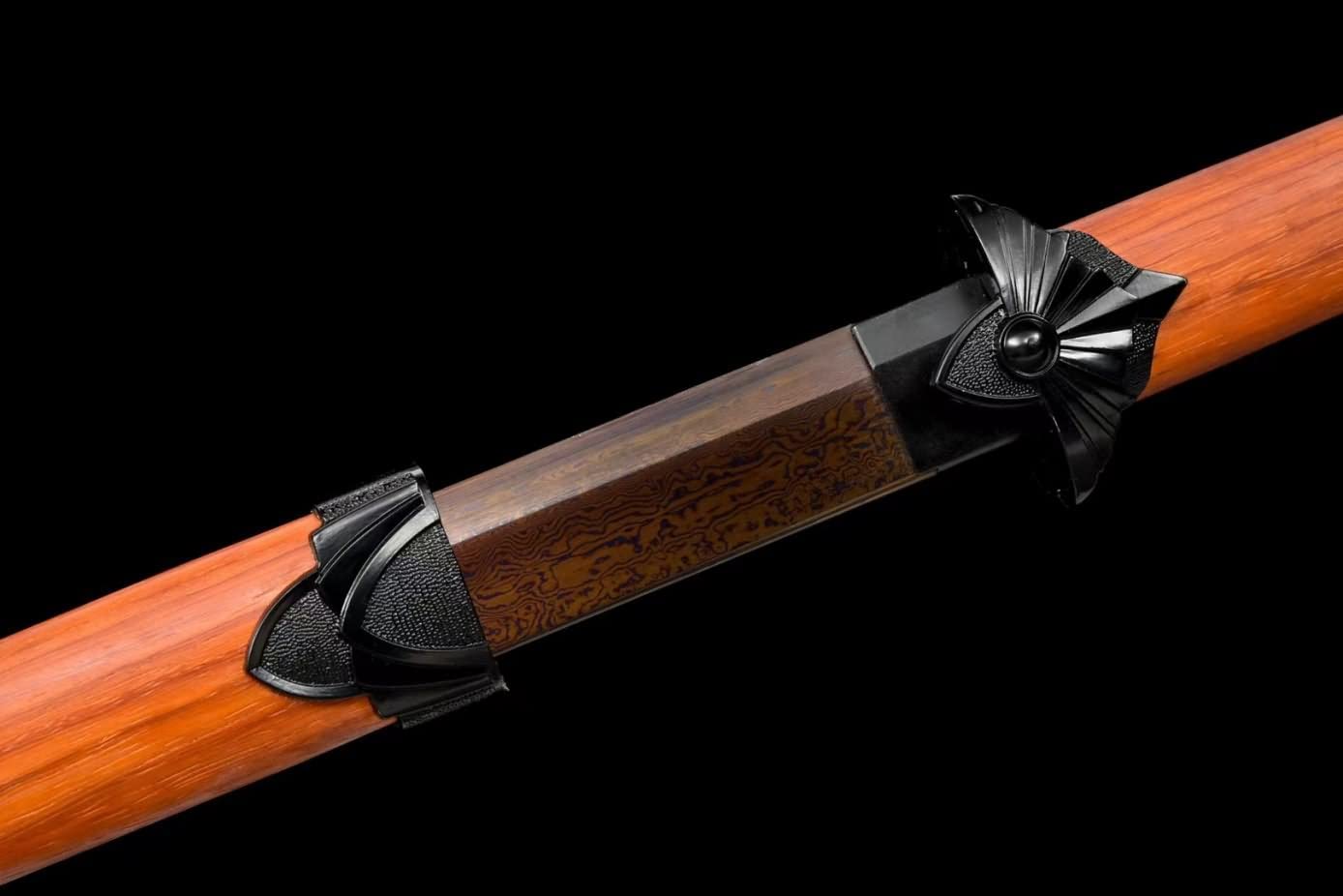
The Tang Hengdao: China’s Lost Sword of Empire
Introduction: The Blade That Built an Empire
Standing straight as a pine tree and sharp as a calligrapher’s brushstroke, the Tang Hengdao (唐横刀) was the ultimate status symbol of China’s golden age. Unlike its curved descendants, this double-edged straight sword embodied the unyielding spirit of the Tang Dynasty (618–907 AD), when Chinese warriors stood toe-to-toe with Turkic horsemen and Tibetan cavalry – and won.
At LOONG BLADE, we’ve resurrected this imperial masterpiece through years of archaeological research and traditional forging, offering modern collectors a chance to own the sword that defined East Asian warfare.
Chapter 1: Anatomy of an Imperial Weapon
1. The Straight, Double-Edged Design
- Length: 70–110 cm (shorter than European longswords)
- Cross-section: Rhombic or hexagonal for maximum rigidity
- Balanced weight: 1.2–1.8 kg (perfect for one-handed use)
Why straight? Designed to pierce lamellar armor (扎甲) in disciplined infantry formations.
2. The Secret Metallurgy
Tang smiths perfected baijiangang (百炼钢) steel:
- Folded 100+ times to remove impurities
- Sandwich-construction: Hard steel edges with softer iron core
- Quenched in animal blood (per Tang Dynasty records) for shock absorption
Modern tests show comparable hardness (HRC 58-60) to Japanese tamahagane steel.
Chapter 2: Battlefield Dominance
The Weapon That Conquered Eurasia
- 751 AD Talas River: Tang infantry held line against Arab cavalry for days
- An Lushan Rebellion: Hengdao-equipped Mobei Army became dynasty’s last hope
- Japanese Adoption: Proto-katana (直刀 chokutō) evolved from captured hengdao
Tactical Advantages:
✔️ Thrust-friendly point for anti-cavalry use
✔️ Double edges allowed slashing in crowded formations
✔️ Compact size ideal for mounted troops
Chapter 3: Cultural Iconography
The Sword of Status
- Officers’ models had jade pommels and gold-wrapped hilts
- Civilian versions (文剑) featured poetry engraved on blades
- Tomb guardians: Many Tang elite buried with hengdao as afterlife protectors
Artistic Legacy:
✍️ Featured in famous Tang poetry like Li Bai’s "Drawing my sword, I cut flowing water"
🎨 Depicted in Dunhuang murals held by armored generals
Chapter 4: Why Did It Disappear?
The Great Shift to Sabers
- 10th century: Cavalry warfare favored curved dao
- Song Dynasty: Armor-piercing role replaced by polearms
- Cultural shift: Scholarly jian became favored over military hengdao
Last Survivors:
- Japan’s: Straight tsurugi swords preserved Tang techniques
- Tibetan: Some ceremonial swords retain hengdao proportions
Chapter 5: LOONG BLADE’s Modern Recreation
Using Tang Dynasty manuscripts and excavated relics, we’ve rebuilt the hengdao with:
Traditional Methods:
- Ancient ore smelting: Using Zhejiang iron sands
- Layered construction: Visible in X-rays like originals
- Authentic fittings: Turquoise-inlaid crossguards
Modern Testing:
⚔️ Cuts cleanly through bamboo armor replicas
🛡️ Deflects simulated arrow impacts without bending
Conclusion: The Sword That Never Died
Though absent from modern wuxia films, the hengdao’s DNA lives on in:
- Japanese katana forging techniques
- Korean ssanggeom dual swords
- Vietnamese emperor’s ceremonial blades

